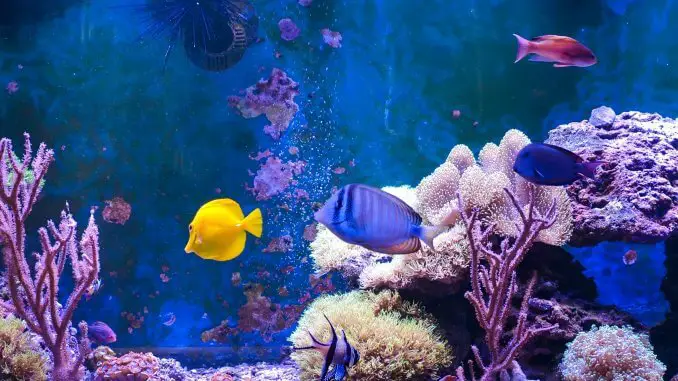
If you want to bring the sort of pet into your home that will have guests staring and curious, then saltwater fish are the way to go.
They are the most colorful fish in the world and are full of life.
Saltwater fish are also some of the most relaxing pets to keep, they don’t need walking, they only need a clean and feeding, the rest of the time can be spent comfortably watching them.
We have rounded up the most popular species out there, from colorful small beginner fish to larger species more suited to experts.
TABLE OF CONTENTS
Clownfish
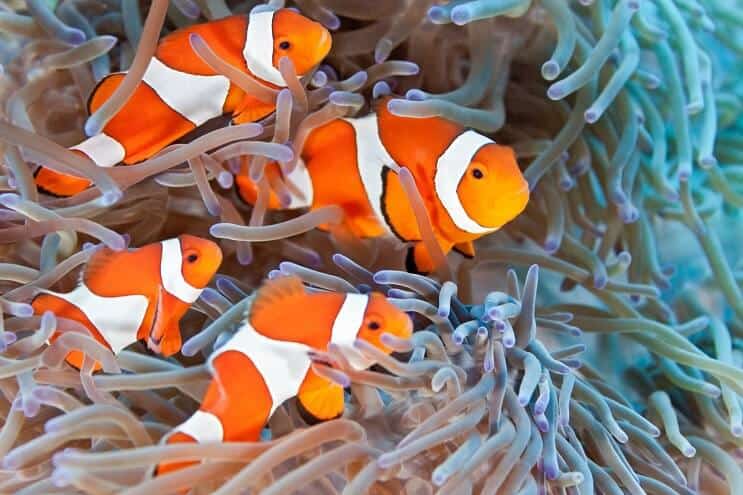
Another fish made famous by Finding Nemo, Clownfish are good beginner fish that require little space and can live for a long time.
They are friendly fish and some can even be hand fed.
In the wild they live in amongst anemones, which can’t sting the Clownfish because of a mucus coating that protects them. They will do better in aquariums if there are anemones for them to live in.
They can live in tanks as small as 10 gallons – however these tanks require more work in order to keep them stable and suitable for fish.
Green Chromis
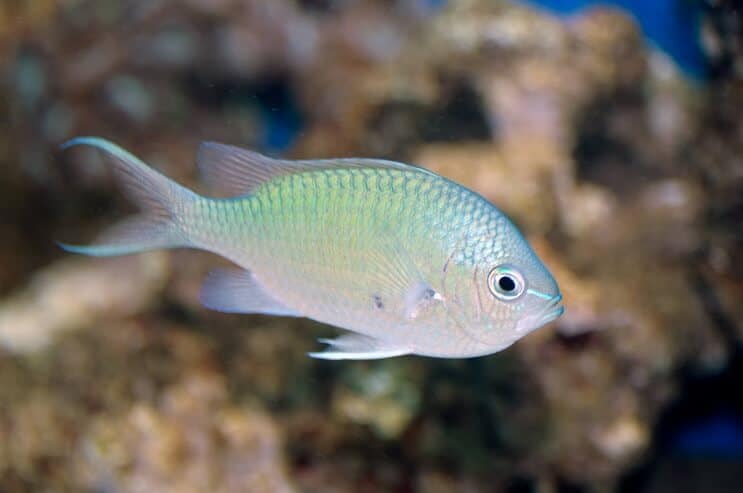
This sparkling blue/green fish is popular for beginners as they are a great looking, peaceful fish (despite being a damselfish).
They must be kept in a shoal, a minimum of six means that they can be as comfortable as possible and shimmer as they are meant to.
Often, they will liven up the aquarium both with their appearance and with their highly active behaviors. Community tanks also benefit from them and can add some variety in size and behavior to the larger solitary fish in saltwater tanks.
Green Chromis are also incredibly hardy but must be fed multiple times a day with meaty foods as they are carnivores.
Wrasses
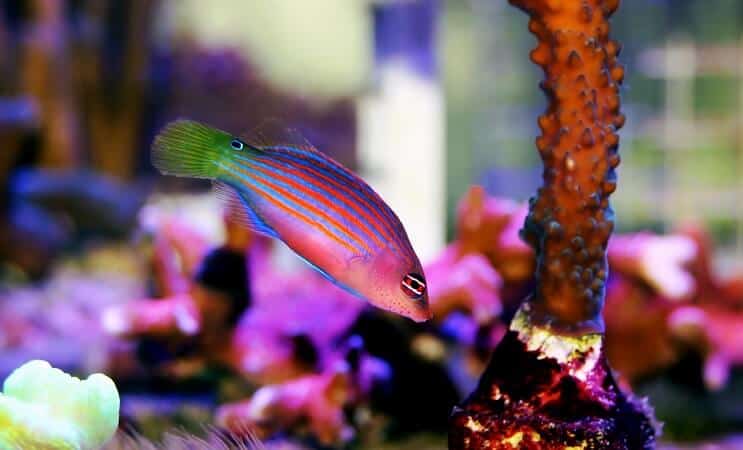
These are one of the most common families of saltwater fish – with over 600 species of brilliant colors, it is no wonder they are so popular.
There is a lot of variation in size, as some will grow to half an inch while others will grow to six foot long. There is even variation within a species, as many will change color within their lifetime.
They are energetic fish so need to eat a lot in order to keep going. Most will eat a selection of common fish foods. The exception is the Cleaner Wrasse, who eats parasites from other fish, but they are difficult to keep in the home aquarium.
Pajama Cardinalfish
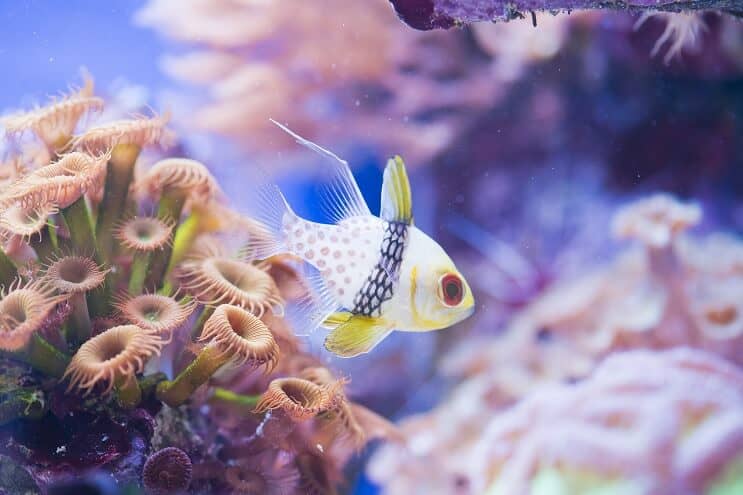
These great little fish are one of the most curious looking on this list and are well suited to new aquariums.
Kept in groups of at least 5, these fish split off at night in order to find food – hence their large eyes. They like to find meaty foods such as mysis shrimp or brine shrimp and should be fed at twilight or later. This fish can also eat pellets and flakes, but a varied diet is best.
They are very peaceful so they should not be kept with more aggressive fish as they can easily be harassed.
Damselfish
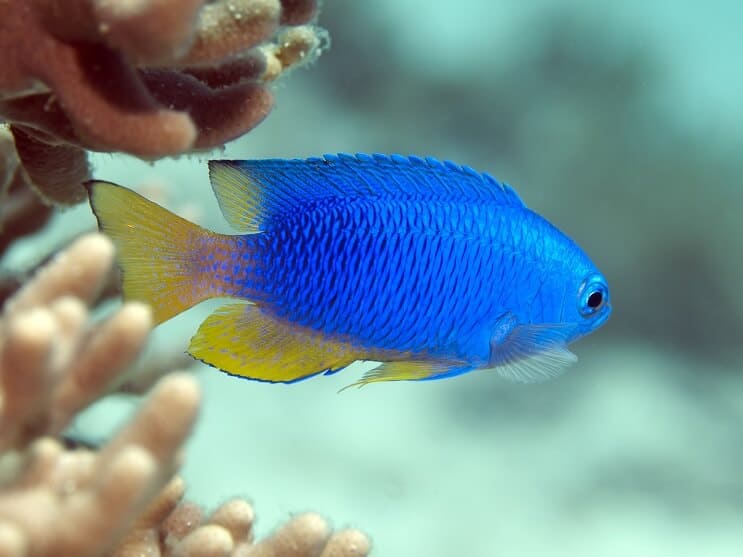
Damselfish are beautiful, easy to care for fish that are almost electric in color.
With over 250 species, there is plenty of variety. This includes the black and white three stripe damsel fish, or the blue sapphire damselfish with black and blue coloration and spiny dorsal fins.
Some remain small at around three inches, while the largest species (the Garibaldi Fish) can grow up to 12 inches. This means the size of tank you get will depend on the species you get.
They will claim parts of the aquarium as their own and fight to defend it. This means they cannot be paired with delicate or docile tank mates as they will soon outcompete them.
Most species are omnivores and will eat a variety of foods such as live shrimps, frozen meats, flake food and lots of other common saltwater foods.
Blennies
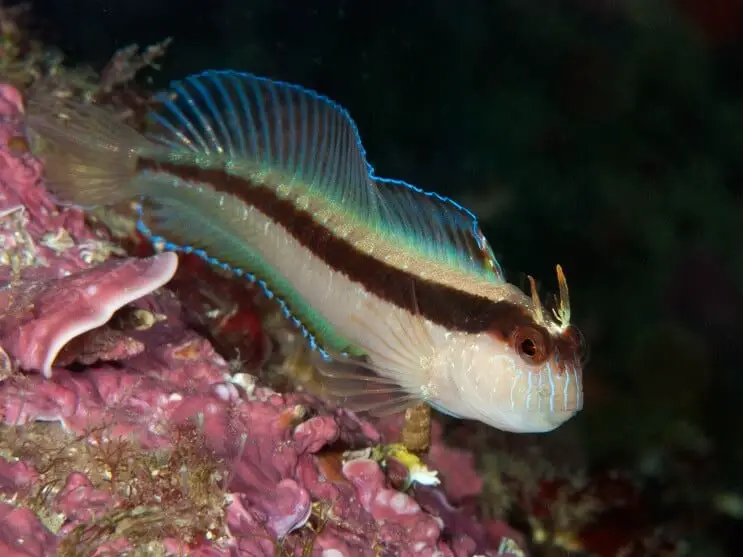
Blennies are hardy and brilliantly colored fish.
They can be territorial towards their own species, so only one Blenny per tank is recommended. However, they can be kept with lots of other fish as they are generally busy burrowing.
This is a curious animal capable of complex communication – it makes them very interesting to watch and spend time with.
A thick layer of soft sediment is needed to allow them to dig around, as well as lots of hiding places for them to shelter in.
Though little, they have a big appetite and will need feeding a variety of foods. Live food such as mysis shrimp or brine shrimp along with dried and frozen foods will keep them healthy.
Coral Beauties
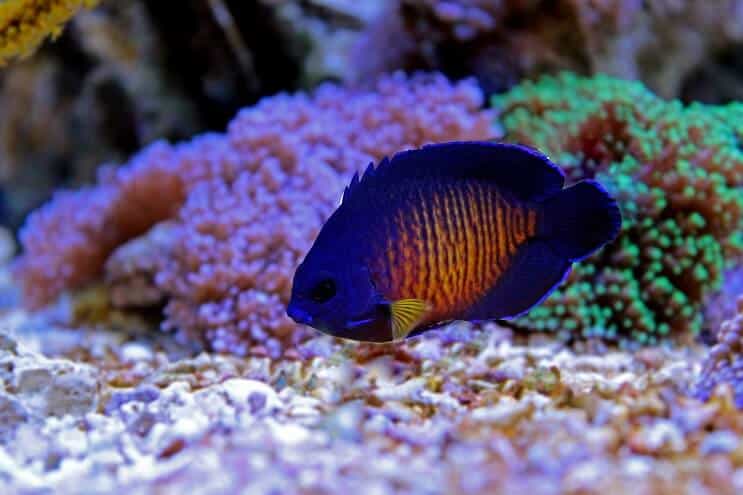
One of the easiest Angelfish to care for, these are active blue and yellow fish that will keep their bright colors for most of their life.
They only grow to around 4 inches but will still need a larger tank, with a minimum of 55 gallons so that they can remain active and have space to swim.
These fish will eat almost anything fed to them, especially algae that they find in the tank. This means that putting them in an established tank will benefit them and you. They may eat coral, but if properly fed they should swim right past them.
Angelfish can be difficult to look after in community tanks, so this should be considered. It’s best to add them to a tank specifically designed for them.
Tangs
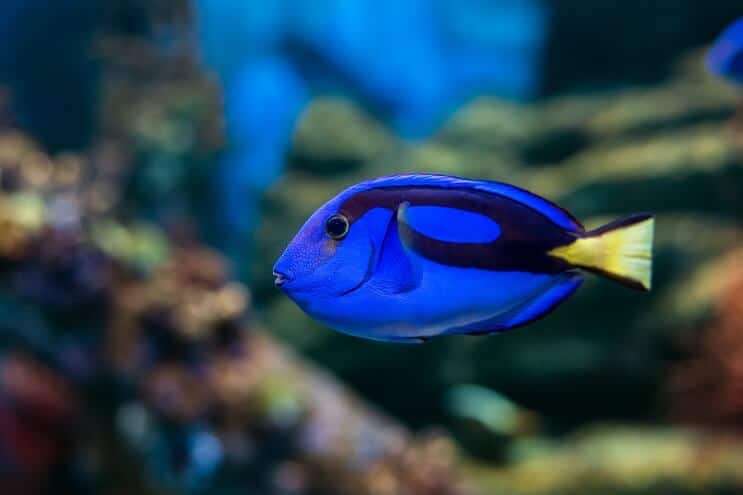
Also known as ‘Surgeonfish’, this group of fish was made famous by Dory from Finding Nemo.
They are popular for their vibrant colors, and are so beautiful that they are often the centerpiece of saltwater tanks.
Most are peaceful and can be placed in community tanks, but they can become territorial after a long time in a tank when new fish are introduced. This can be solved by rearranging the tank when new additions are introduced.
They can grow up to 12 inches long, so need large tanks depending on the exact species you get.
Surgeonfish will eat algae that grow in the aquarium, alongside a diet of vegetables and the occasional small amounts of meat such as brine shrimp.
Diamond Watchman Goby
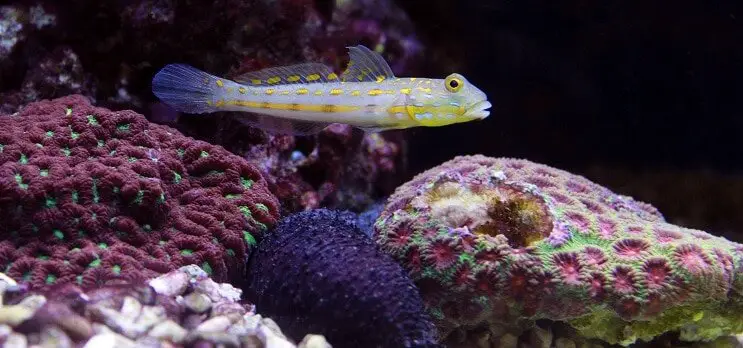
This shy fish is full of character, as well as being adorable looking with vibrant orange diamonds along their body.
They will spend their days cleaning the substrate looking for food and will do so peacefully if they are not paired with other sand sifters.
These fish are used to feeding throughout the day, so will need feeding at least twice a day. Many keepers hide food in the top levels of the sand for them to find, which replicates their natural conditions better.
Interestingly, Diamond Watchman Goby’s can change their sex to pair up and reproduce.
They will grow to around 6 inches and will need a tank of at least 50 gallons.
Butterflyfish
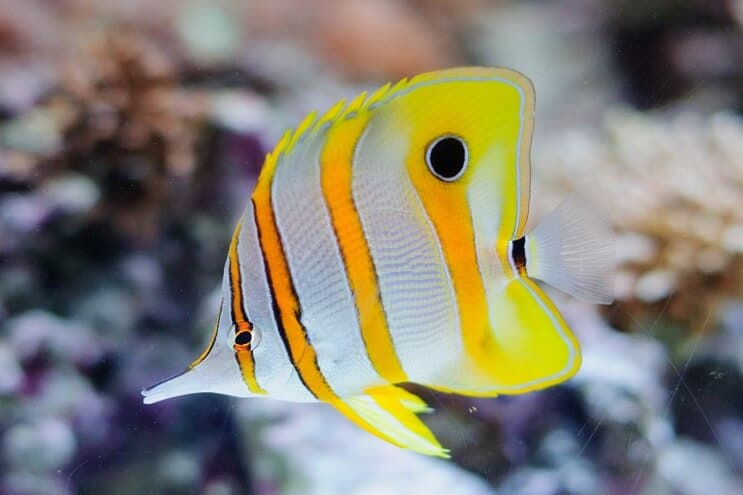
One of the most beautiful saltwater fish are Butterflyfish, they make a great centerpiece due to their dazzling good looks and shape.
Some are suitable for reef tanks, such as the raccoon butterflyfish, but most are unsuitable as they will try to eat the coral – this makes them suitable for a fish only tank.
Most need to eat a varied diet, including: small crustaceans, flake/pellets, frozen sponge foods and plankton.
This fish needs a large aquarium that is at least 75 gallons.
Orange Spotted Goby
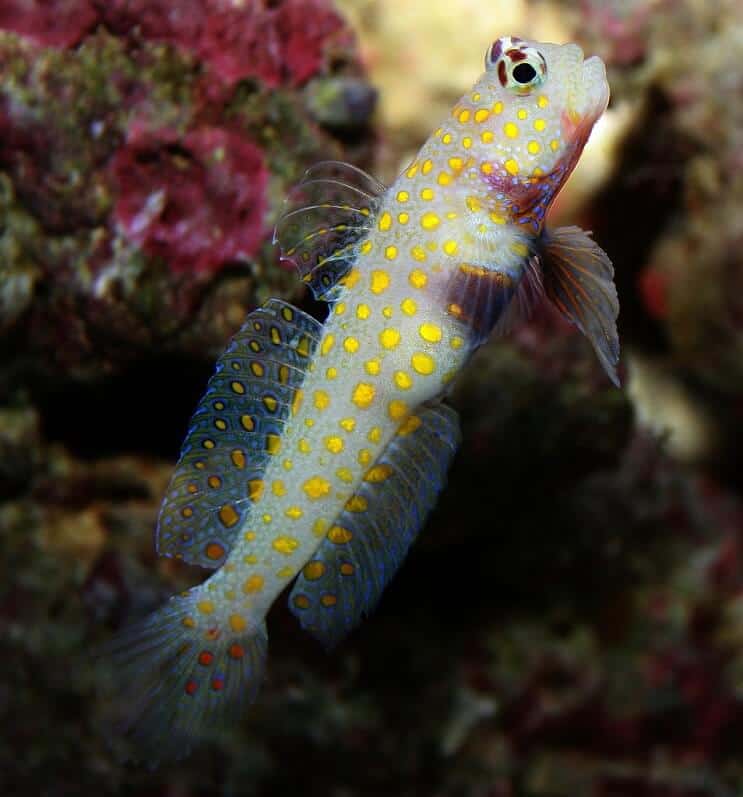
A magnificently patterned goby, the orange spotted goby is a curious fish.
Goby fish love to hide, but also need open swimming space for when they decide to dart around.
They frequently form a bond with blind pistol shrimp in the wild, where the shrimp digs them a burrow and the goby looks out for predators. This can be replicated in the home aquarium.
This fish needs feeding a minimum of twice a day, and can eat mysis shrimp, brine shrimp or even table shrimp.
They are jumpers, so a secure lid is needed – soft sediment will keep them comfortable and happy.
Firefish
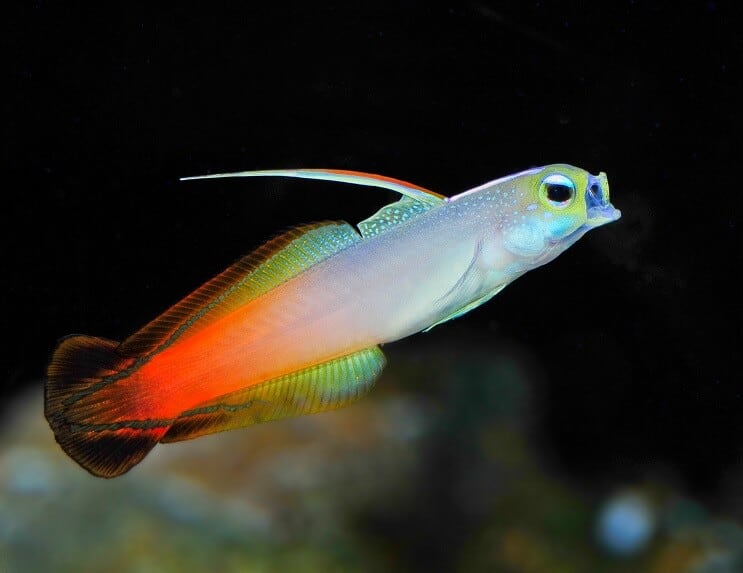
The Firefish Goby is an energetic fish with bold red shades and a long dorsal spine that can hold it into crevices, or communicate with other Firefish.
It is the perfect reef fish as it acts as a dither fish and encourages fish to explore the reef and show the unique behaviors that are reserved for when they are at ease.
They also have a personality of their own, which includes frantic roaming and quiet observation of the tank. Open spaces and a hiding hole will allow them to do both.
This fish is an omnivore and will need feeding twice a day – a varied diet of algae and meats is recommended.
Dottyback
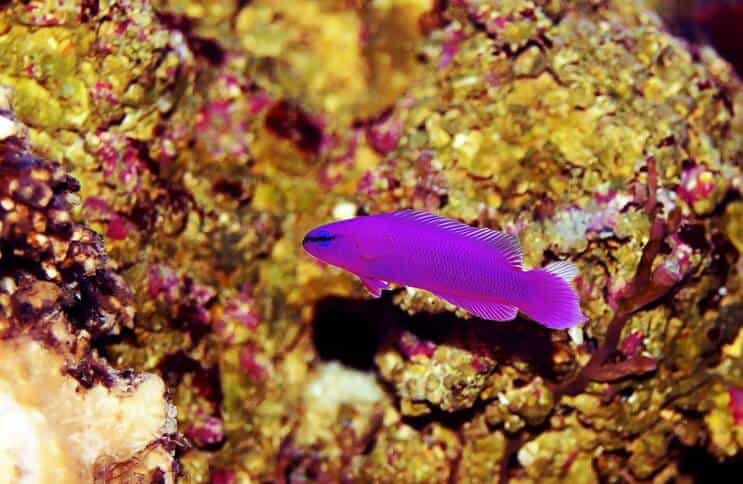
Dottybacks are smart and colorful fish, best described as introverts that will sometimes brave the open waters.
They are remarkably hardy, resistant to many common diseases and easy to feed and care for. This makes them a great choice for beginners, provided their temperament is kept in check.
Many species are peaceful, though a little territorial, and will do little harm to any curious tank mates. Keeping them with aggressive fish such as angelfish or wrasses will keep them in check.
One of the most popular species includes the Orchid Dottyback, which remains at around 2.5 inches and is one of the easiest to pair with other fish. There are still new species of this fish being discovered.
Mollies
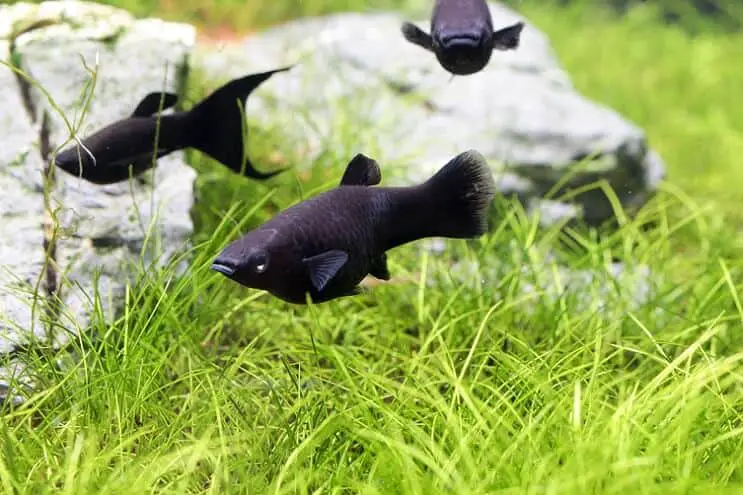
Mollies can survive in freshwater or saltwater, however they require acclimation to saltwater. This can be done over the course of a few hours and is most successful with black mollies.
They are peaceful and make excellent community fish, though they prefer a planted aquarium. Most will grow to around 3 inches so will need a tank of at least 10 gallons. They are very social and will enjoy spending time with the other fish in a community tank.
Mollies need to eat a variety of foods including flakes and live food, and will clean some of the algae in your tank which can be useful in saltwater tanks.
Though they are most popular as freshwater fish, they can make great additions to your saltwater tank.
Royal Gramma
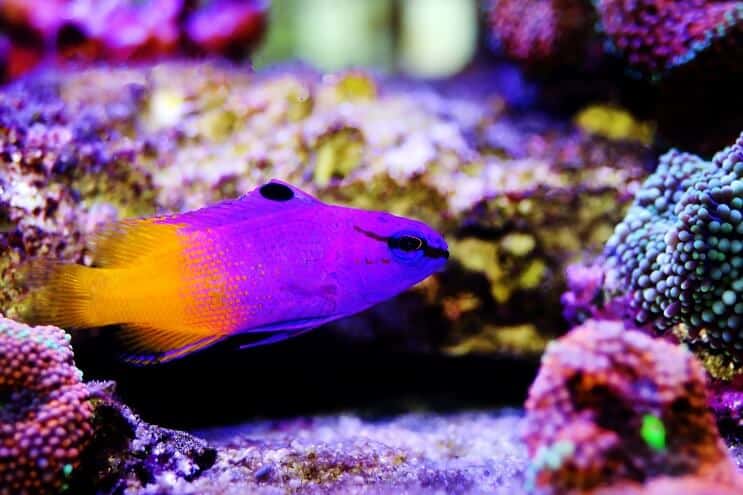
Royal Gramma are the ideal reef fish; hardy, interesting and best of all incredibly vibrant.
They are easy to pair with other saltwater fish, in tanks as small as 30 gallons. The tank must have enough hiding places and dim lighting for them to feel secure.
It has a rich purple front with a fade to a sunflower yellow rear making them a stand out fish for their looks.
This color will stay vibrant if they are able to eat a variety of foods, with crustaceans and frozen meats being the best choice. Royal Grammas are not fussy eaters though, so can be fed a wide selection of food.
Flame Hawkfish
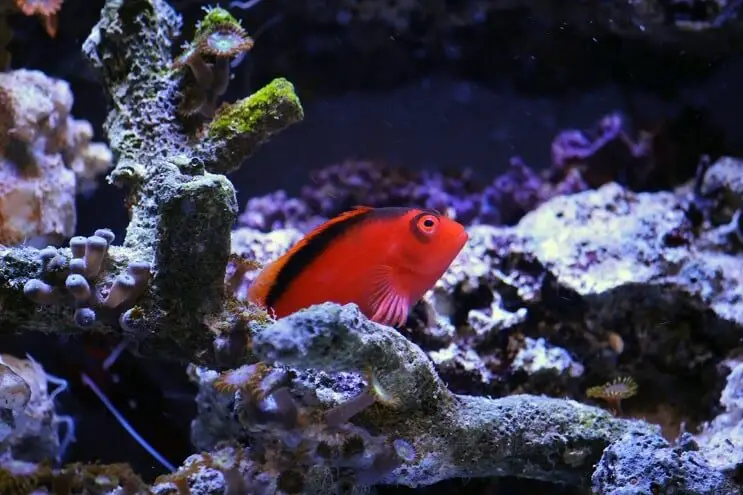
A bottom dwelling predator with a rich red body, the Hawkfish is suitable for most saltwater tanks.
It will perch on the top of coral and swoop down to attack bottom dwellers, but this can be prevented by providing them with hiding places.
Hawkfish are not the best swimmers, so care should be taken when keeping them with larger more aggressive fish. They are also difficult to feed, as dried and frozen food does not quite cut it for them. Persistence will lead to positive results though!
Triggerfish
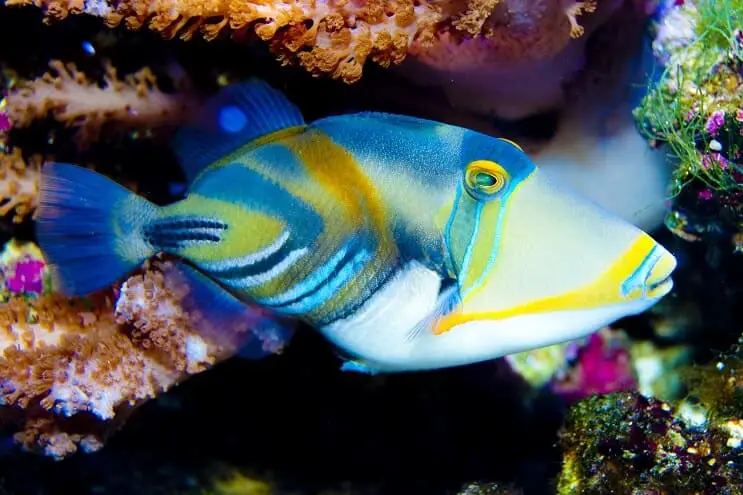
One of the hardest fishes to keep with other community fish, but also one of the most prized for that reason.
They are very hardy, often called “indestructible”. They still require regular care, but they are forgiving of mistakes and disease resistant.
This fish is full of personality, with funky patterns and colors such as the clown or crosshatch.
Triggerfish have sharp dorsal spines and a powerful jaw for breaking and eating crustaceans.
Summary
Saltwater fish can be the centerpiece of any room.
You can successfully keep these beautiful fish, all it takes is patience and dedication.
It will be very rewarding as these fish can help you reduce stress and improve mental health.
Do you keep any saltwater fish? Let us know about your experiences with any of these fish in the comments section below…

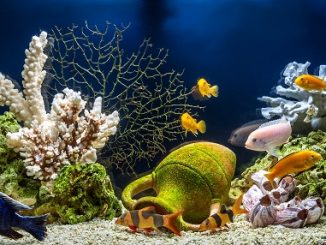
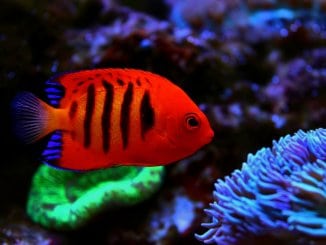
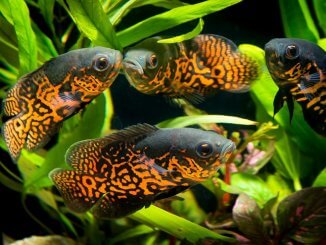
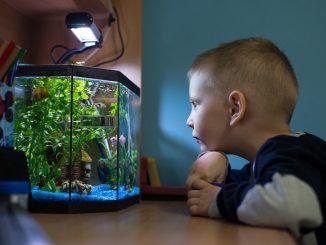
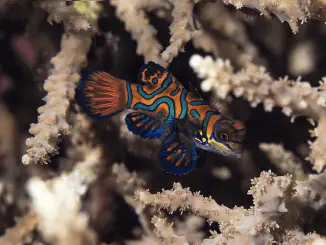
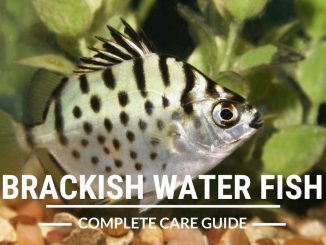
Great, informative information for beginner saltwater aquarists! I had a beautiful freshwater tank for several years but moved to another part of the country and decided to re-home my fish and snails. Now that we are settled in our home,I am starting out again- brand-new 32 gal biocube aquarium. I am in the cycling stage now. Not rushing the process, and planning to buy a pair of seahorses. I am very excited about this. I am doing my research but would Love to hear what you would add. I know coral has to be non stinging and I should probably buy a couple (?) Of plants and and maybe one or two non aggressive fish. What are your thoughts? Thank you for your information.